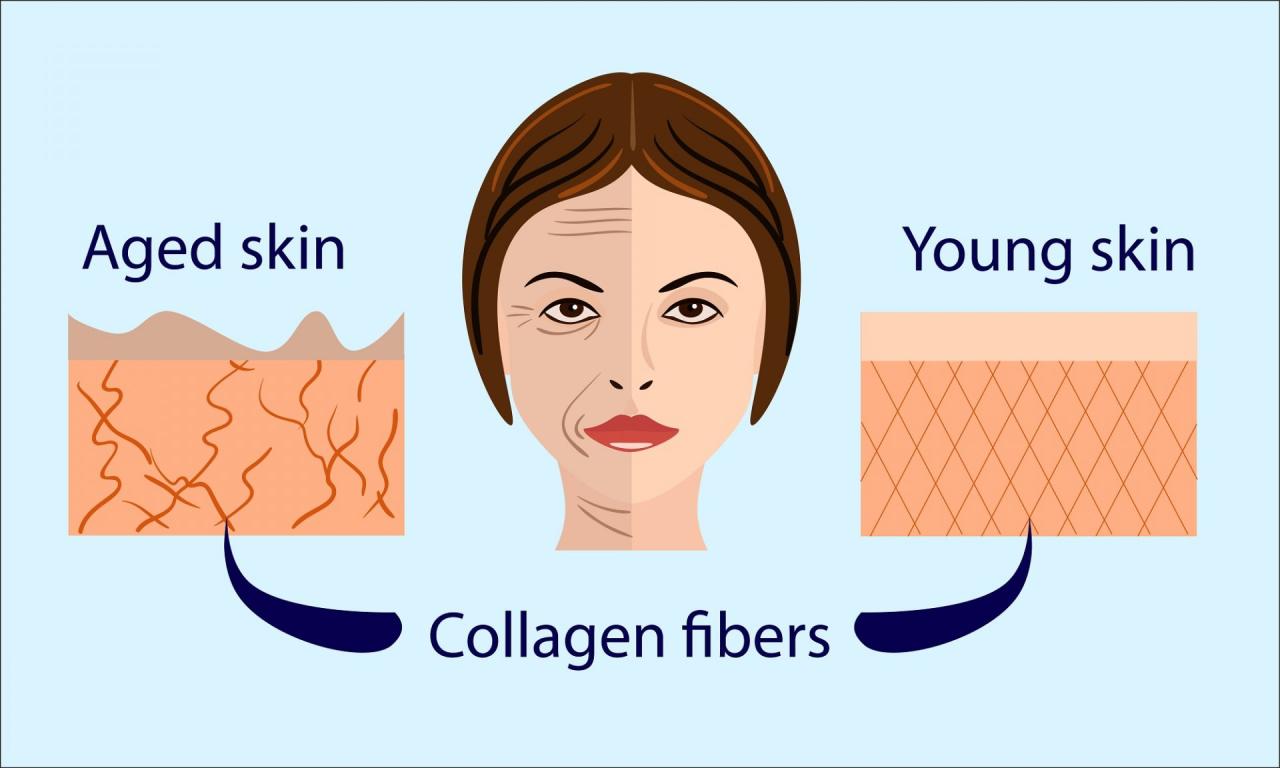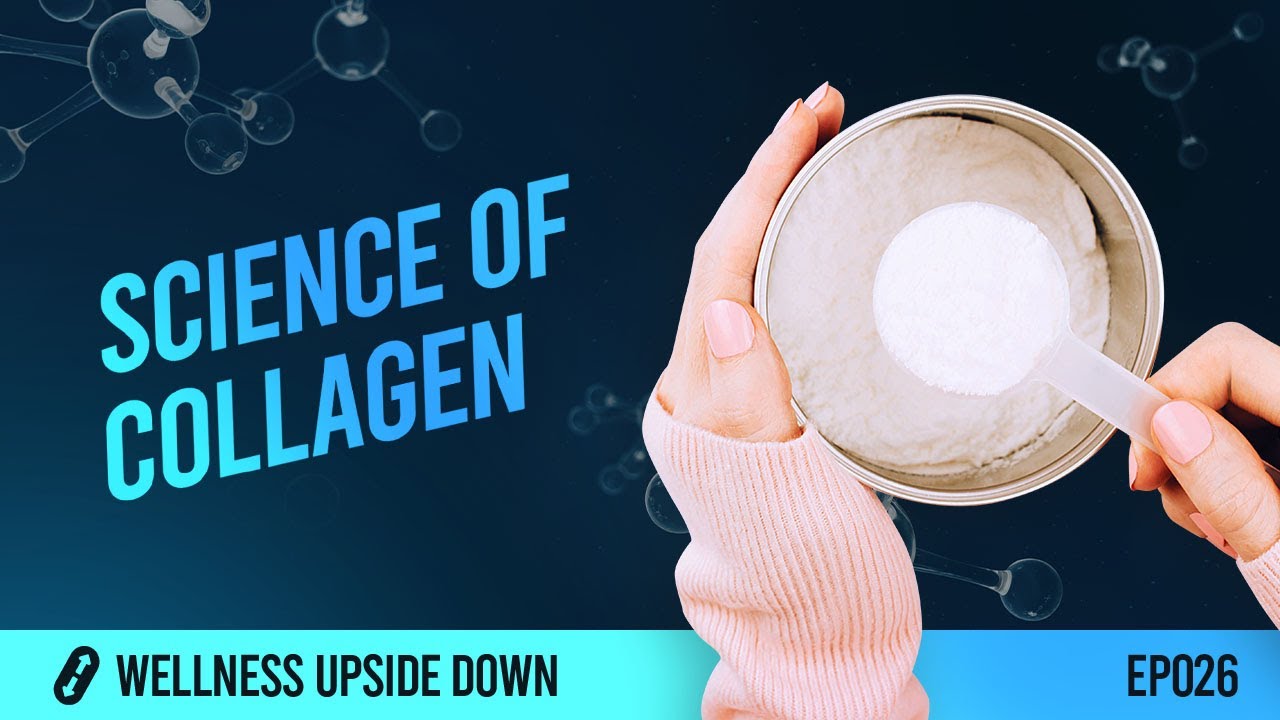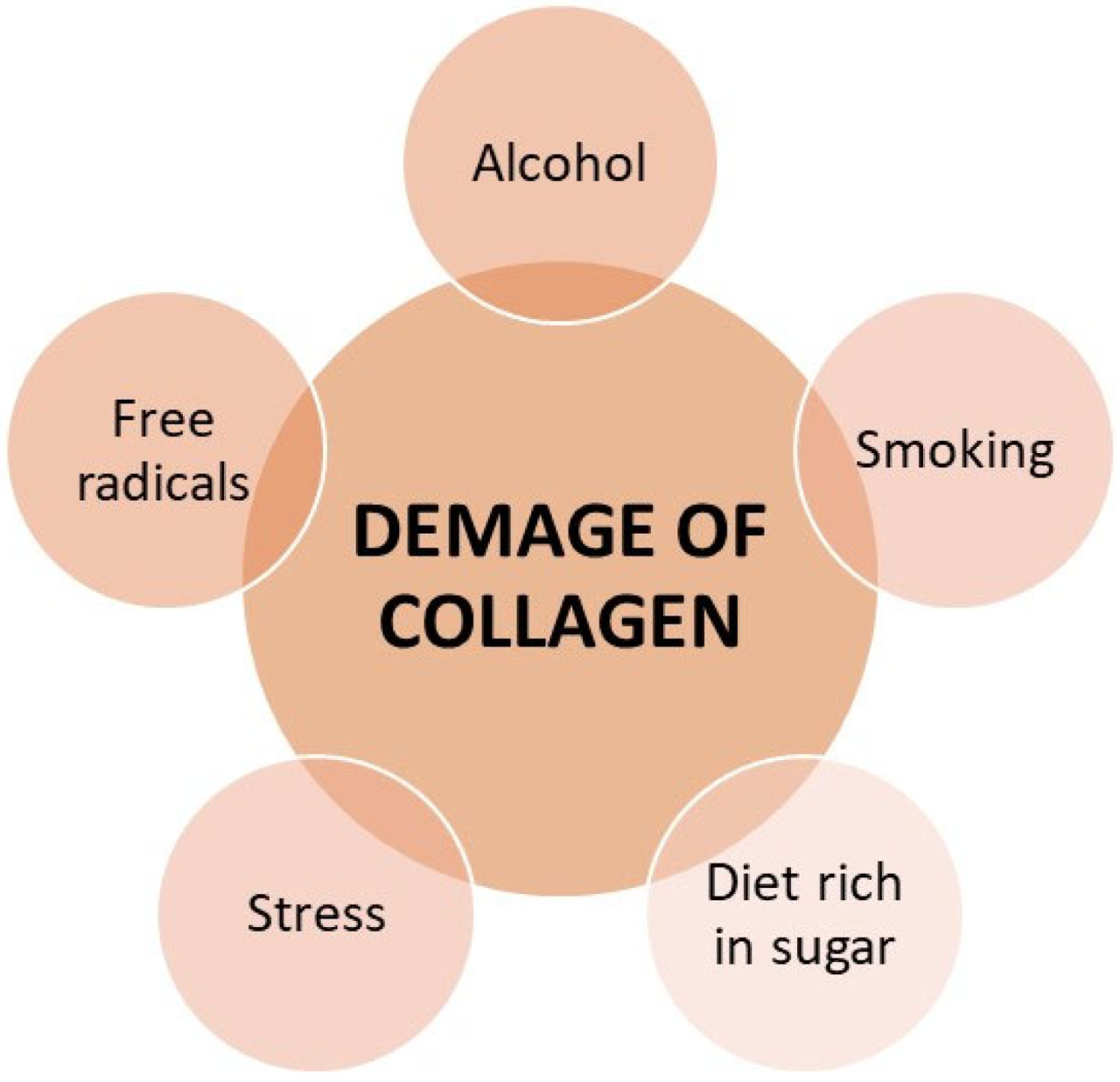The science behind collagen and its benefits for the body is a fascinating journey into the world of proteins! Think of collagen as your body’s internal scaffolding – the unsung hero holding everything together, from your bouncy skin to your bendy joints. But this isn’t just some run-of-the-mill protein; we’re talking about a complex molecule with multiple types, each playing a unique role in maintaining your overall health.
Prepare to be amazed as we unravel the mysteries of collagen synthesis, its various benefits, and the surprising ways you can support your body’s natural collagen production. Get ready for a collagen adventure!
This exploration will cover everything from the intricate molecular structure of collagen and its different types (Type I, anyone?), to the fascinating processes of synthesis and degradation. We’ll delve into the evidence-based benefits of collagen for skin, joints, and beyond, examining the science behind its impact on aging, joint health, and even gut health. We’ll also uncover the best sources of collagen, whether it’s from your dinner plate or a supplement bottle, and discuss the factors that influence its production and absorption, including diet, lifestyle, and genetics.
Buckle up, it’s going to be a wild ride!
Collagen: The Body’s Amazing Glue (and What Happens When It Gets Sticky): The Science Behind Collagen And Its Benefits For The Body

Collagen. It’s the word whispered in hushed tones in beauty salons and fitness studios, the protein promising youthful skin and bouncy joints. But what exactly
-is* this magical molecule, and how does it actually work its wonders? Let’s dive into the science, because understanding collagen is way more interesting (and less gooey) than you might think.
Collagen Types and Their Roles
Think of collagen as the body’s ultimate construction worker – a master builder responsible for holding everything together. But it’s not a one-size-fits-all kind of builder; it employs a diverse team of specialized collagen types, each with its own job description and preferred building site.
The human body boasts at least 28 types of collagen, but the main players are Types I, II, and III. Type I is the workhorse, making up about 90% of the body’s collagen, found in skin, bones, tendons, and ligaments. Type II is the cartilage specialist, providing structure and cushioning to joints. Type III lends a hand to Type I, providing support in various tissues like skin, blood vessels, and organs.
Imagine Type I as the seasoned foreman, Type II the meticulous architect, and Type III the trusty assistant.
At a molecular level, collagen is a triple helix – three protein strands intertwined like a super-strong, biological rope. This structure gives it incredible tensile strength and resilience. The amino acid composition varies slightly between types, influencing their properties. Type I is known for its high tensile strength, while Type II has more flexibility, reflecting their respective functions.
| Collagen Type | Key Characteristics | Major Locations in the Body | Primary Function |
|---|---|---|---|
| Type I | High tensile strength, abundant | Skin, bones, tendons, ligaments | Structural support, wound healing |
| Type II | Flexible, shock-absorbing | Cartilage | Joint cushioning, flexibility |
| Type III | Supports Type I, elasticity | Skin, blood vessels, organs | Structural support, tissue regeneration |
| Type IV | Forms basement membranes | Basement membranes of tissues and organs | Filtering and structural support |
Collagen Synthesis and Degradation: A Building and Demolition Project

The creation and breakdown of collagen is a continuous cycle, like a meticulously planned city renovation project. Collagen synthesis begins with the production of procollagen molecules within cells. These molecules then undergo modifications and self-assemble into the characteristic triple helix structure. Enzymes play crucial roles in each step, ensuring the process runs smoothly.
Factors like age, nutrition, and genetics significantly influence collagen production. As we age, collagen synthesis slows down, leading to decreased levels and the visible signs of aging. A diet rich in protein, vitamin C, and other essential nutrients supports collagen production, while smoking and excessive sun exposure accelerate its breakdown.
Collagen degradation involves the action of enzymes called matrix metalloproteinases (MMPs). These enzymes break down the collagen fibers, contributing to tissue remodeling and repair. However, an imbalance in MMP activity can lead to excessive collagen breakdown, contributing to conditions like osteoarthritis.
Flowchart (Description): The flowchart would begin with the transcription of collagen genes, followed by translation into procollagen peptides. These peptides undergo modifications and assemble into triple helices. Secretion and extracellular assembly would be the next steps, followed by fibril formation and cross-linking. On the degradation side, the flowchart would show the action of MMPs breaking down collagen fibers, leading to the release of collagen fragments.
Benefits of Collagen for the Body: A Holistic Approach
Collagen’s benefits extend far beyond youthful skin. It’s a crucial component of various tissues and plays a vital role in maintaining overall health and well-being. While more research is needed to fully understand the extent of its benefits, the current evidence is quite promising.
- Skin Health: Collagen supplementation has shown promise in improving skin elasticity, hydration, and reducing the appearance of wrinkles.
- Joint Health: Studies suggest that collagen may help improve joint pain and mobility in individuals with osteoarthritis.
- Gut Health: Emerging research indicates a potential role for collagen in maintaining gut lining integrity and supporting gut health.
- Bone Health: Collagen is a key component of bone structure, contributing to bone strength and density.
- Muscle Health: Collagen plays a role in muscle structure and function.
Collagen Sources and Supplementation: Choosing Your Collagen
Collagen can be obtained from various dietary sources, such as bone broth and certain meats. However, collagen supplements offer a concentrated and convenient way to increase collagen intake. Hydrolyzed collagen, also known as collagen peptides, is a popular choice due to its high bioavailability.
| Collagen Supplement Type | Pros | Cons | Bioavailability |
|---|---|---|---|
| Hydrolyzed Collagen (Peptides) | High bioavailability, easily absorbed | Can be pricey | High |
| Collagen Tablets/Capsules | Convenient | Lower bioavailability than hydrolyzed collagen | Moderate |
| Collagen Powder | Versatile, can be added to drinks or food | Taste can be an issue for some | High |
Factors Affecting Collagen Production and Absorption: The Collagen Equation, The science behind collagen and its benefits for the body

Several factors influence both the production and absorption of collagen. A balanced diet rich in protein, vitamin C (essential for collagen synthesis), zinc, and other nutrients is crucial. Lifestyle factors like smoking and excessive sun exposure negatively impact collagen production, leading to premature aging and other health issues.
Graphical Representation (Description): A line graph would show collagen levels decreasing with age. Separate lines could represent individuals with different genetic predispositions to collagen production. The graph would also illustrate the positive impact of a healthy diet and lifestyle on maintaining collagen levels, showing a less steep decline compared to individuals with unhealthy habits.
Collagen’s Role in Specific Diseases: The Collagen Connection
Collagen plays a significant role in various diseases. In osteoarthritis, the breakdown of collagen in cartilage contributes to joint pain and dysfunction. Similarly, the age-related decline in collagen contributes to skin aging and wrinkle formation. Conversely, collagen is vital for wound healing and tissue repair, and research explores its potential applications in regenerative medicine.
Numerous studies investigate collagen’s role in diverse conditions. For example, research on osteoarthritis focuses on collagen supplementation to improve cartilage health. Studies on wound healing explore using collagen-based materials to accelerate tissue regeneration.
Last Recap
So, there you have it – a whirlwind tour of the amazing world of collagen! From its intricate molecular structure to its multifaceted roles in maintaining youthful skin and healthy joints, collagen is a true powerhouse. We’ve explored the science behind its synthesis, degradation, and the various ways you can support your body’s natural collagen production. Remember, while supplements can be helpful, a healthy diet, active lifestyle, and mindful sun protection are key players in the collagen game.
Embrace the science, and let your inner collagen shine!
